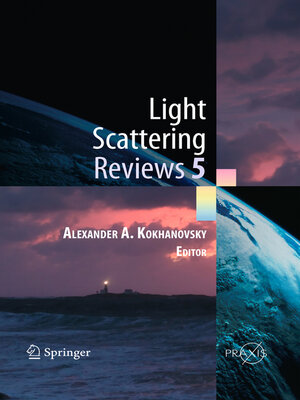Light Scattering Reviews 5
ebook ∣ Single Light Scattering and Radiative Transfer · Springer Praxis Books
By Alexander A. Kokhanovsky

Sign up to save your library
With an OverDrive account, you can save your favorite libraries for at-a-glance information about availability. Find out more about OverDrive accounts.
Find this title in Libby, the library reading app by OverDrive.



Search for a digital library with this title
Title found at these libraries:
| Library Name | Distance |
|---|---|
| Loading... |
Light scattering by densely packed inhomogeneous media is a particularly ch- lenging optics problem. In most cases, only approximate methods are used for the calculations. However, in the case where only a small number of macroscopic sc- tering particles are in contact (clusters or aggregates) it is possible to obtain exact results solving Maxwell's equations. Simulations are possible, however, only for a relativelysmallnumberofparticles,especiallyiftheirsizesarelargerthanthewa- length of incident light. The ?rst review chapter in PartI of this volume, prepared by Yasuhiko Okada, presents modern numerical techniques used for the simulation of optical characteristics of densely packed groups of spherical particles. In this case, Mie theory cannot provide accurate results because particles are located in the near ?eld of each other and strongly interact. As a matter of fact, Maxwell's equations must be solved not for each particle separately but for the ensemble as a whole in this case. The author describes techniques for the generation of shapes of aggregates. The orientation averaging is performed by a numerical integration with respect to Euler angles. The numerical aspects of various techniques such as the T-matrix method, discrete dipole approximation, the ?nite di?erence time domain method, e?ective medium theory, and generalized multi-particle Mie so- tion are presented. Recent advances in numerical techniques such as the grouping and adding method and also numerical orientation averaging using a Monte Carlo method are discussed in great depth.







